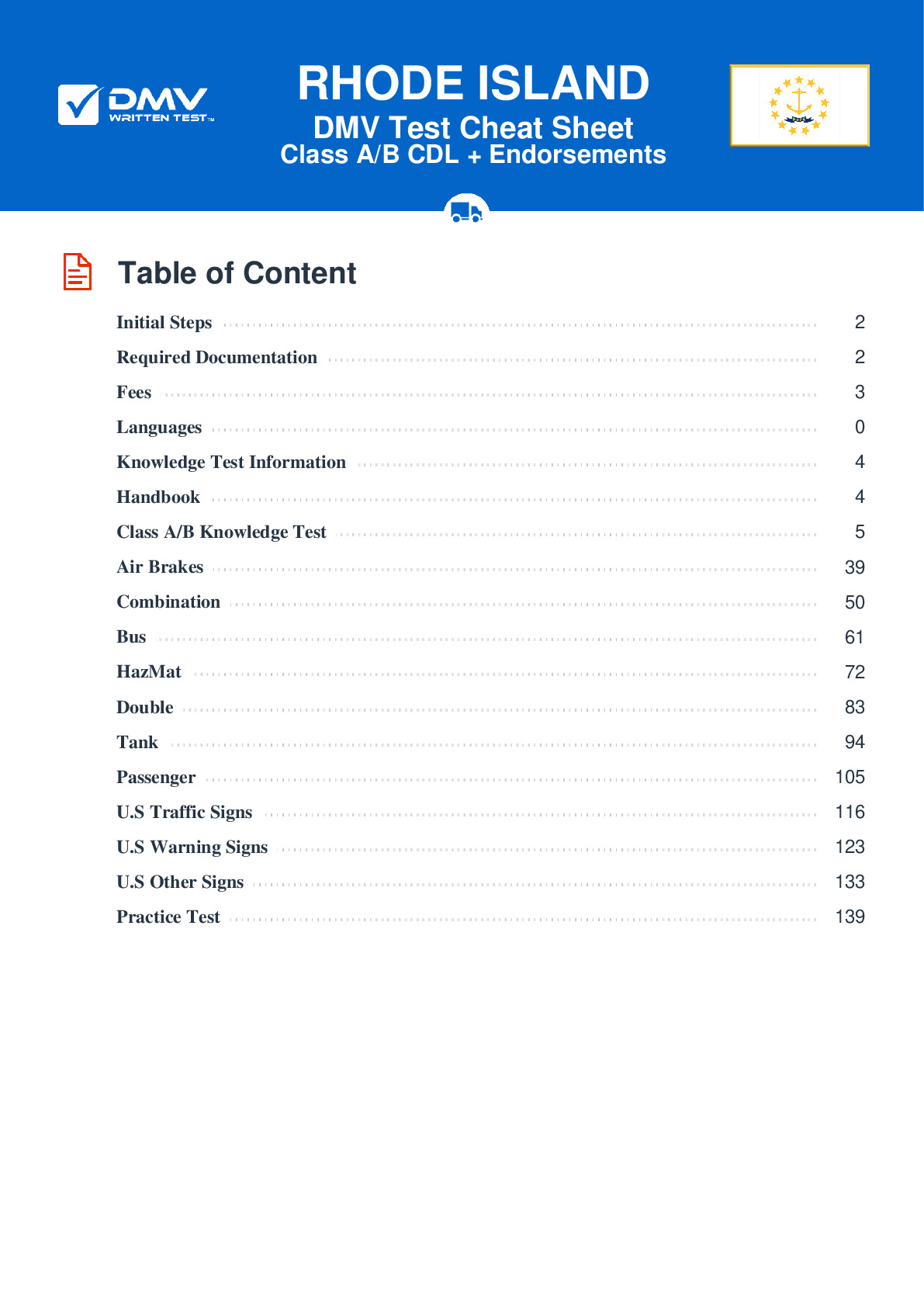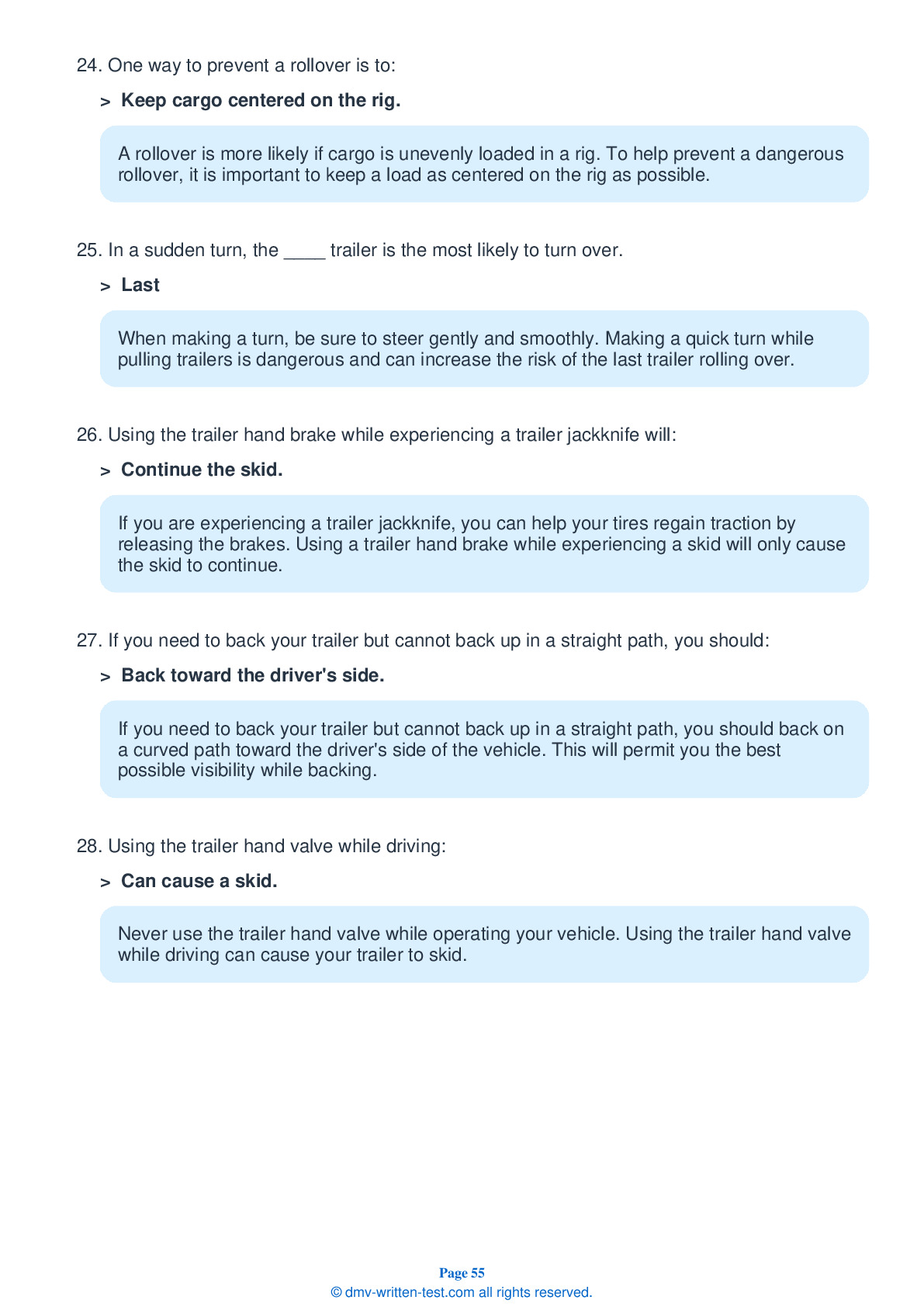Air Brakes
This endorsement is required for driving a vehicle with air brakes. To receive this endorsement, applicants must pass a written test. The test consists of 25 multiple choice questions. Each question has three answer choices. To pass, the applicant must answer at least 20 questions correctly. Test questions come from the Rhode Island Commercial Driver License Manual. Questions come from the chapter covering: Air Brakes. The Air Brakes endorsement may be used with the Class A, B or C CDL.
Number of Question
Passing Score
13. Lights that indicate that anti-lock brakes are not working are:
Explanation
Vehicles equipped with Anti-Lock Braking Systems (ABS) have yellow malfunction lights to indicate issues in the braking system.
14. ABS brakes:
Explanation
The purpose of an Anti-Lock Braking System (ABS) is to prevent a vehicle's wheels from locking up when the driver brakes hard on a slippery surface.
15. During an inspection, slack adjusters on S-cam brakes should not move more than:
Explanation
Check each slack adjuster after parking on level ground, setting wheel chocks, and disengaging the parking brake. Pull the slack adjusters to make sure they do not move more than about one inch from where the push rod is attached. If they move more than one inch, they may be out of adjustment and will need to be fixed.
16. A wig wag is:
Explanation
Vehicles with air brakes are required to be equipped with a low pressure warning device. A wig wag is a type of low air pressure warning device. This device drops a mechanical arm into the driver's view if the pressure in the tanks drops to a level between 55 and 75 psi.
17. Before driving a vehicle with air brakes, you should ensure that the ____ come on automatically when air pressure falls below 45 psi.
Explanation
Before driving a vehicle with air brakes, you should ensure that the spring brakes come on automatically when air tank pressure falls to a level between 20 and 45 psi. You can do this by chocking the wheels and releasing air from the braking system by stepping on and off the brake pedal. Once the pressure levels drop to an unsafe level, the parking brake valve should pop out and spring brakes should come on.
18. Having ABS on only one axle:
Explanation




